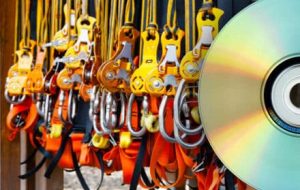Blasting and the Use of Explosives
Home More Training Resources OSHA Construction Industry Training Requirements Blasting and the Use of Explosives
OSHA Training Requirements - Blasting and the Use of Explosives
This website is not the official or final authority to determine OSHA compliance responsibilities, which are set forth in OSHA standards themselves, and the Occupational Safety and Health Act of 1970. Because OSHA regulations are constantly being added, deleted, and/or revised, you must not rely on this website as the official or final authority of OSHA training requirements; refer to the official OSHA regulations available on OSHA’s website (osha.gov). – See disclaimers.
1926.900 – 1926.914 – Blasting and the Use of Explosives
1926.900 – General Provisions.
(a) – The employer shall permit only authorized and qualified persons to handle and use explosives.
(k)(3)(i) – The prominent display of adequate signs, warning against the use of mobile radio transmitters, on all roads within 1,000 feet of blasting operations. Whenever adherence to the 1,000-foot distance would create an operational handicap, a competent person shall be consulted to evaluate the particular situation, and alternative provisions may be made which are adequately designed to prevent any premature firing of electric blasting caps. A description of any such alternatives shall be reduced to writing and shall be certified as meeting the purposes of this subdivision by the competent person consulted. The description shall be maintained at the construction site during the duration of the work, and shall be available for inspection by representatives of the Secretary of Labor.
(q) – All loading and firing shall be directed and supervised by competent persons thoroughly experienced in this field.
1926.901 – Blaster Qualifications
(c) – A blaster shall be qualified, by reason of training, knowledge, or experience, in the field of transporting, storing, handling, and use of explosives, and have a working knowledge of State and local laws and regulations which pertain to explosives.
(d) – Blasters shall be required to furnish satisfactory evidence of competency in handling explosives and performing in a safe manner the type of blasting that will be required.
(e) – The blaster shall be knowledgeable and competent in the use of each type of blasting method used.
1926.902 – Surface Transportation of Explosives.
(b) – Motor vehicles or conveyances transporting explosives shall only be driven by, and be in the charge of, a licensed driver who is physically fit. He shall be familiar with the local, State, and Federal regulation governing the transportation of explosives.
(i) – Each vehicle used for transportation of explosives shall be equipped with a fully charged fire extinguisher, in good condition. An Underwriters Laboratory-approved extinguisher of not less than 10-ABC rating will meet the minimum requirement. The driver shall be trained in the use of the extinguisher on his vehicle.
1926.909 – Firing a Blast
(a) – A code of blasting signals equivalent to Table U-1, shall be posted on one or more conspicuous places at the operation, and all employees shall be required to familiarize themselves with the code and conform to it. Danger signs shall be placed at suitable locations.

On Site OSHA Training Classes

Online OSHA Training Courses

